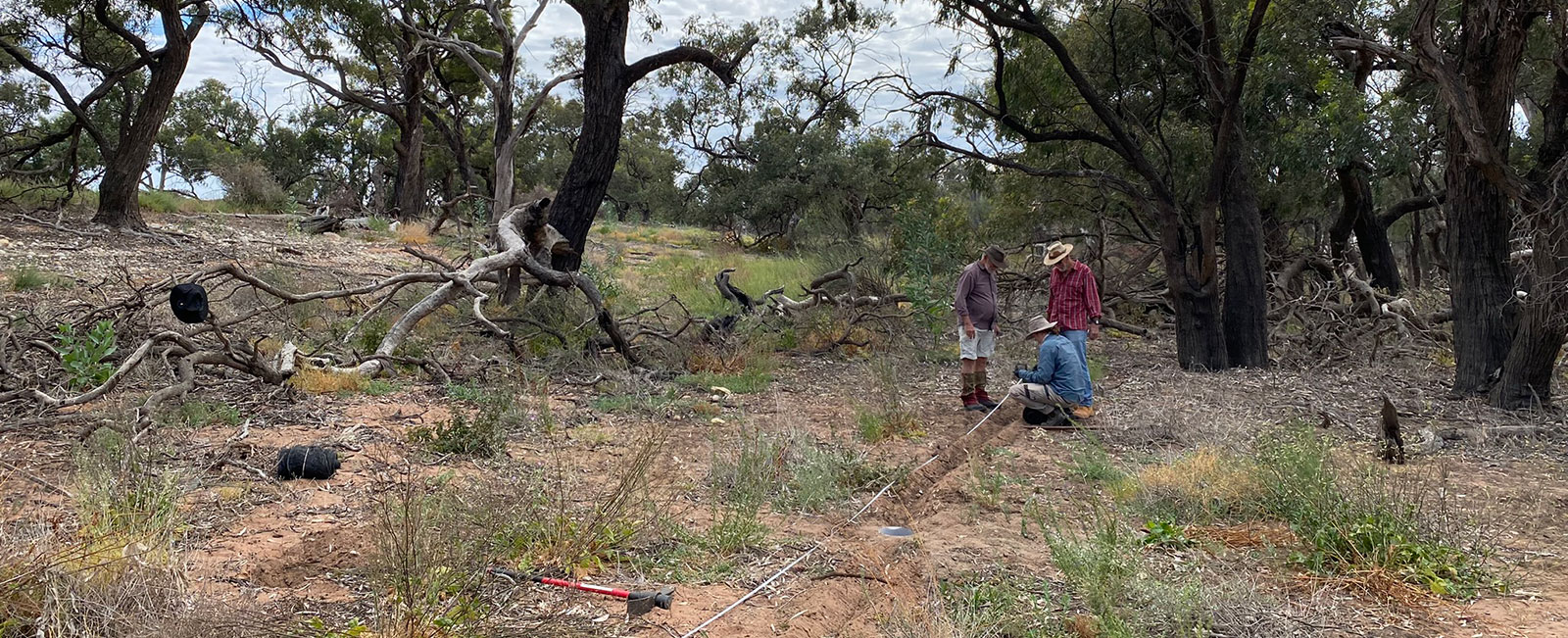Murbpook Nature Reserve, on the western side of the River Murray, experienced extensive flooding in late 2022, with the whole floodplain underwater for a prolonged period. We know the flooding has impacted flora and fauna in the area, and our recent baseline ecological assessment has assisted in quantifying the reserve's current state and developing its conservation management plan.
The survey took place in November 2023 and used a combination of techniques, including:
While the overall fauna volume and richness were low—including no Dunnart observations, which we would typically expect to find—some exciting species were observed, including:
-
Bolam's Mouse (Pseudomys bolami)
-
Echidna (Techyglossus aculeatus)
-
Tessellated Gecko (Diplodactylus tessellatus)
The low fauna diversity indicates the landscape's current biodiversity condition and implies species' return to this area following the flooding will take time.
In contrast, the avian diversity at Murbpook Nature Reserve appears to be thriving, with a very high richness of 70 different bird species observed, including:
-
Nationally-listed Southern Whiteface (Vulnerable) (Aphelocephala leucopsis leucopsis)
-
State-listed Australasian Darter (Rare) (Anhinga novaehollindiae novaehollindiae)
-
State-listed White-bellied Sea Eagle (Endangered) (Haliaeetus leucogaster)
-
State-listed Elegant Parrot (Rare) (Neophema elegans elegans)
The bird diversity suggests good overall ecological health has been maintained in the region, particularly concerning avian populations.
The vegetation assessment included recording four state-listed plant species, with two not sighted previously* and likely emerging from the seed bank post-flood, pioneer species in a degraded environment.
-
Purple Lovegrass (Rare) (Eragrostis lacunaria)
-
*Five-spined Bindyi (Rare) (Sclerolaena muricata ssp. Villosa)
-
*Creeping Boobialla (Rare) (Myoporum parvifolium)
-
Prickly Bottlebrush (Rare) (Callistemon brachyandrus)
These results indicate that recolonisation after flooding is required, along with implementing targeted feral animal control to support improvement in fauna diversity and populations over time. Ongoing monitoring will also allow us to track changes and recovery of the floodplain and inform conservation strategies.
 Above: Putting in the pitfall traps
Above: Putting in the pitfall traps
Top: Tessellated Gecko